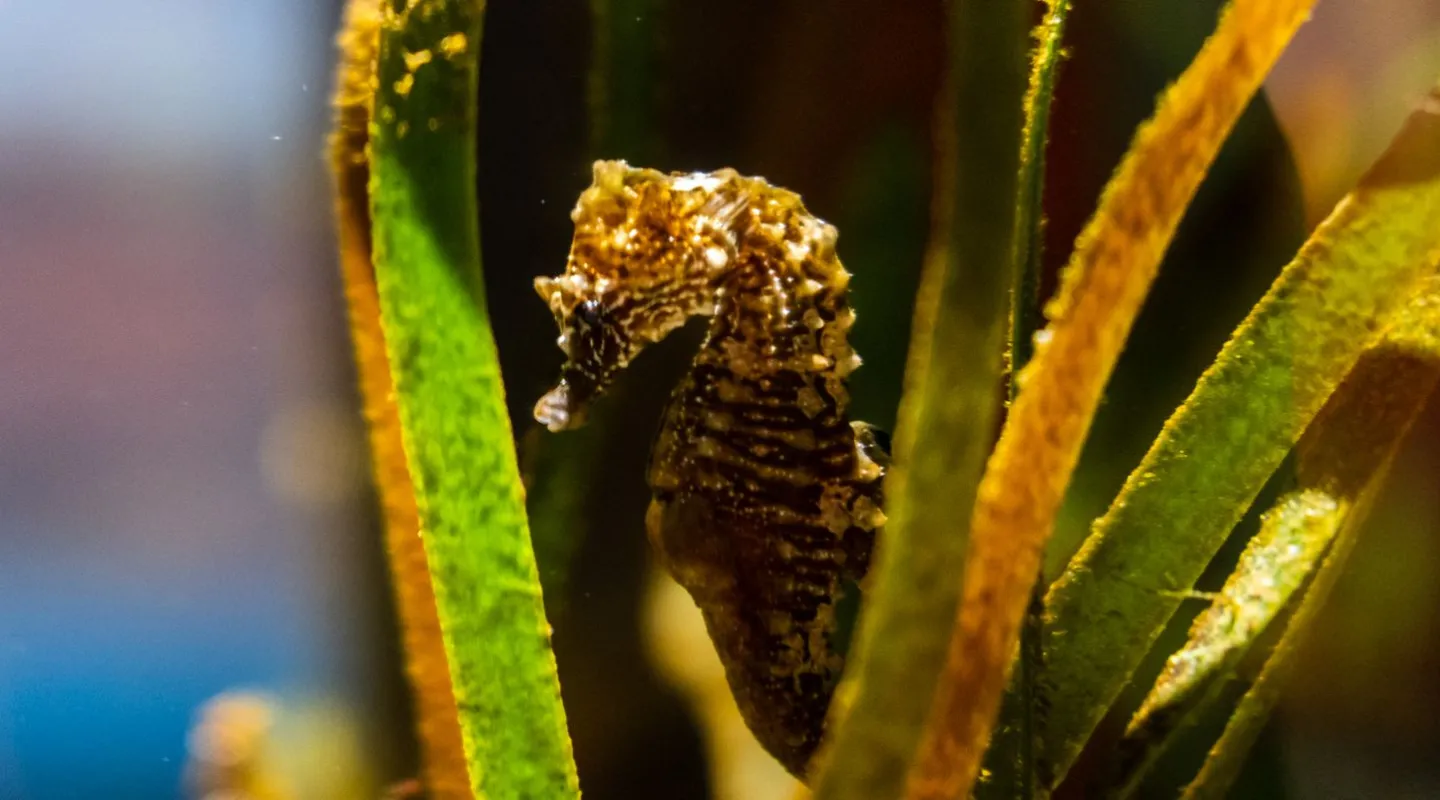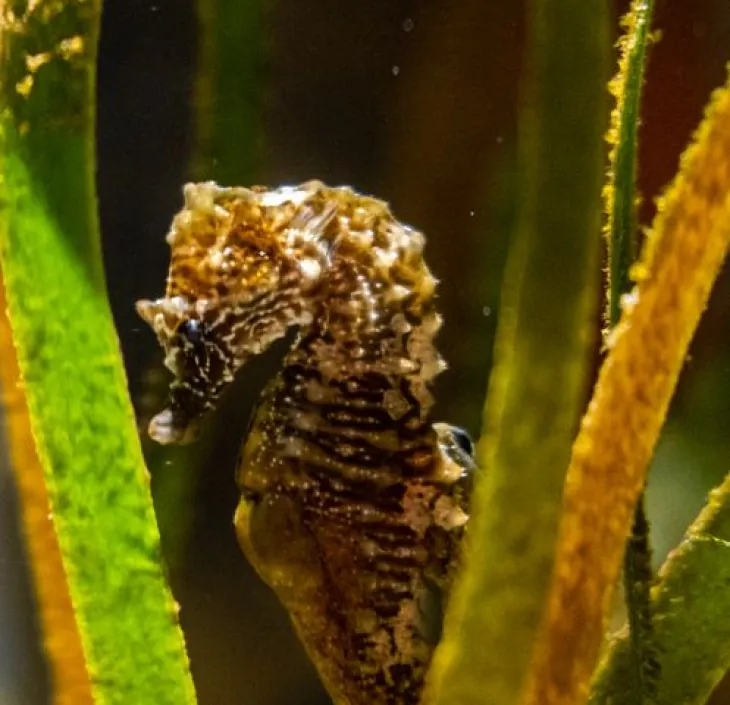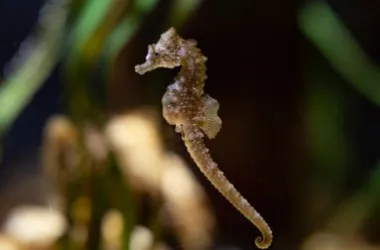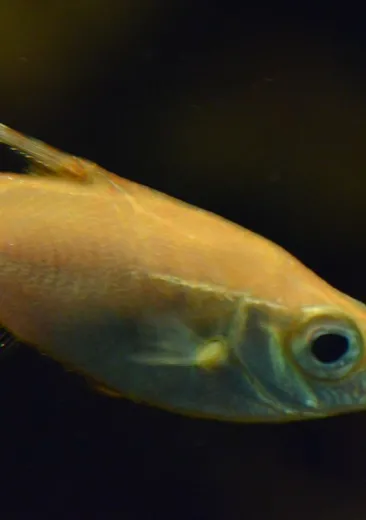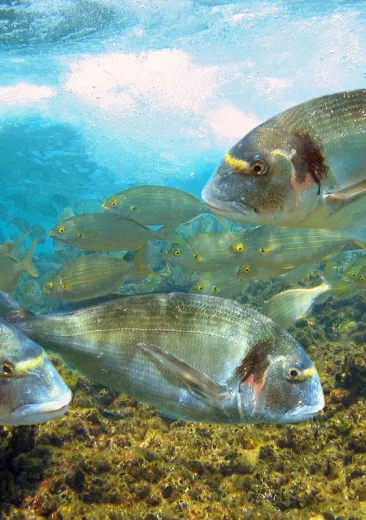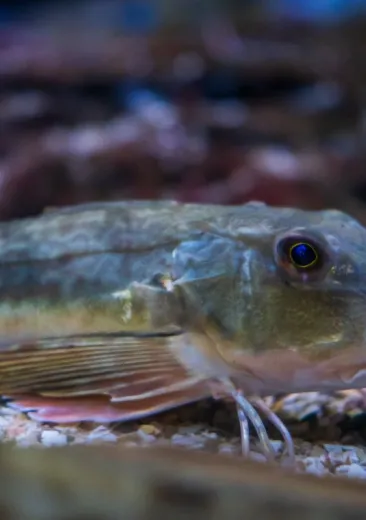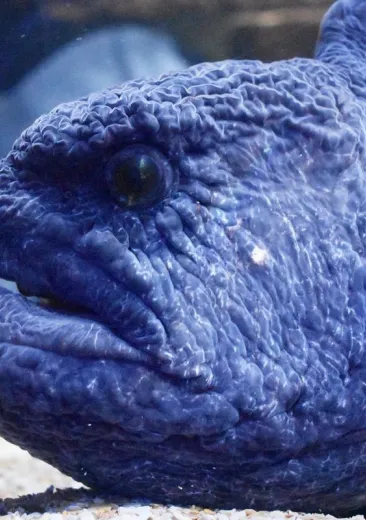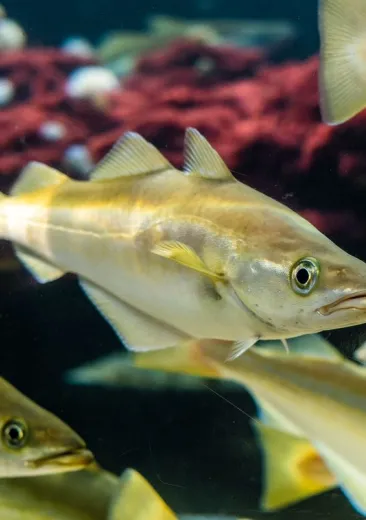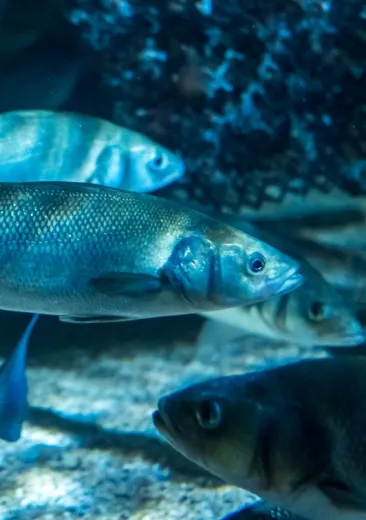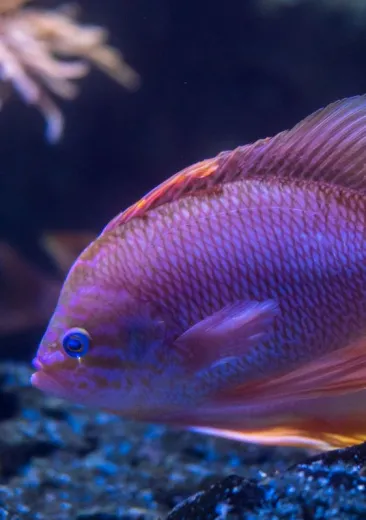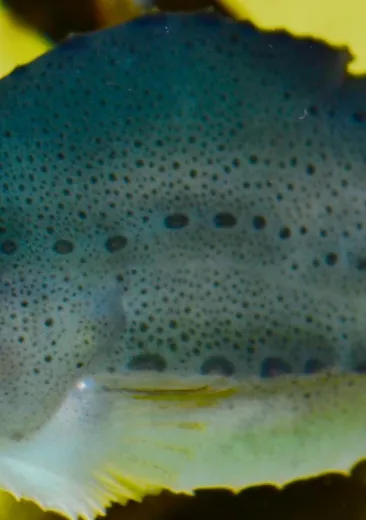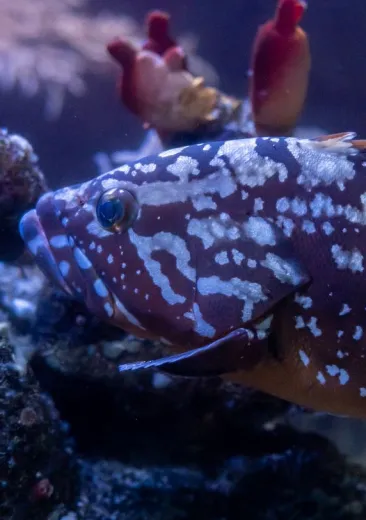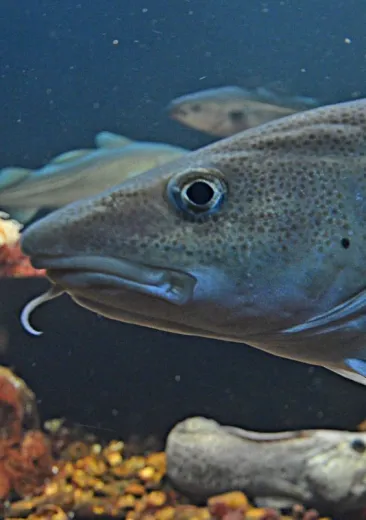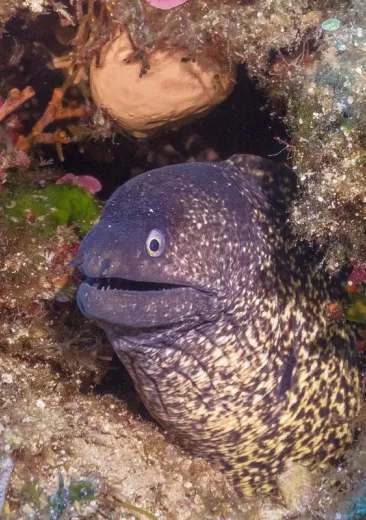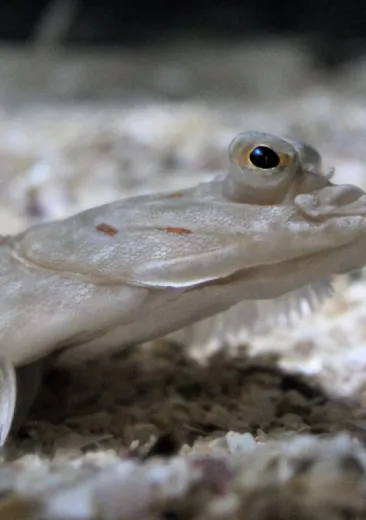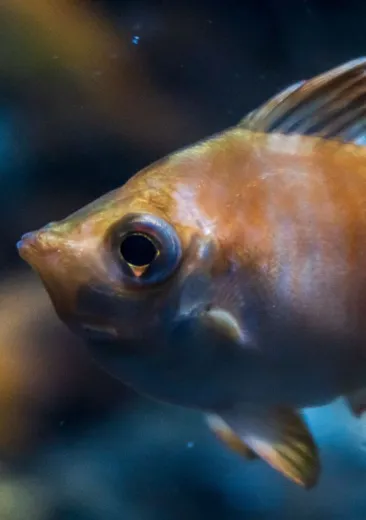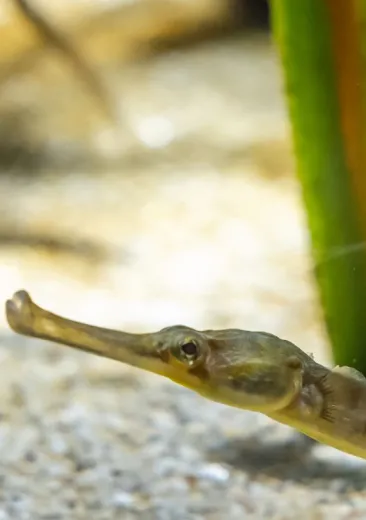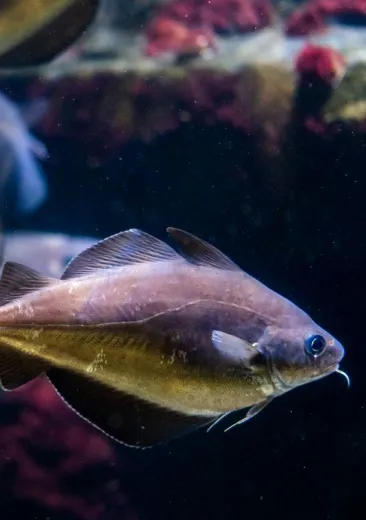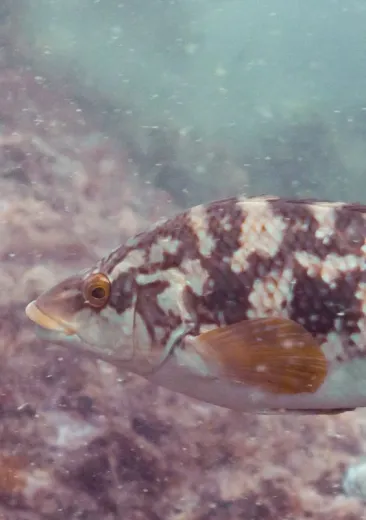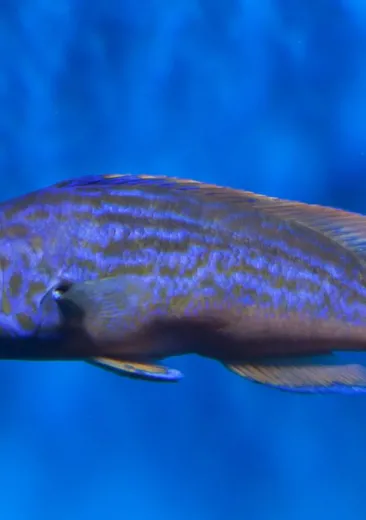After a courtship ritual that resembles a ballet, the female lays her eggs in the male's pouch. The male incubates the eggs for 4 to 5 weeks. After hatching, the baby seahorses are expelled from the pouch by intense contractions.
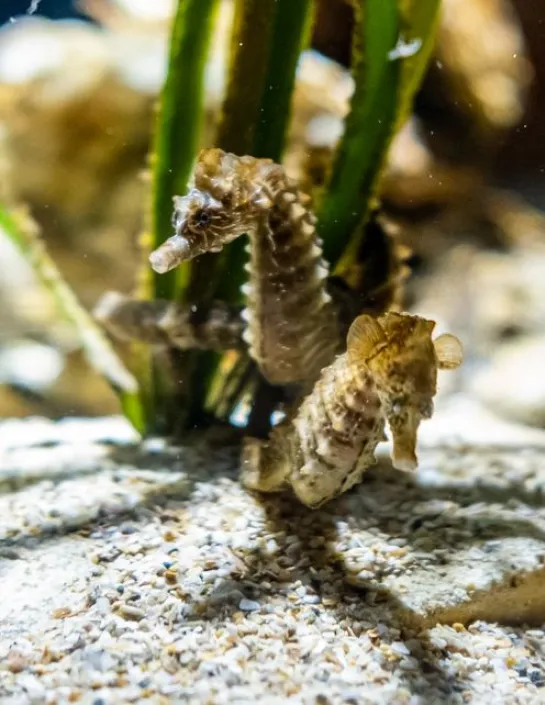
Identity card
Short-snouted Seahorse
- Scientific name:
- Hippocampus hippocampus
- Family:
- Syngnathidae
- Class:
- Actinopterygii
- Phylum:
- Chordata
- Year of description:
- Linnaeus, 1758
- IUCN Status:
- Data Deficient
- CITES-status:
appendix II
- Distribution:
-
Mediterranean and Black Seas, North Sea to Senegal.
- Habitat:
-
Down to a depth of 10 metres, 30 metres maximum.
- Size:
Between 7 and 13 cm
- Diet:
-
Plankton
